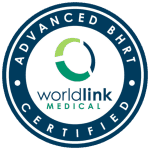Platelet-Rich Plasma (PRP) Injections
In recent years, doctors have learned that the body can heal itself. Platelet-rich plasma therapy is a form of regenerative medicine that can harness those abilities and amplify the natural growth factors your body uses to heal tissue.
What is plasma and what are platelets?
Plasma is the liquid portion of whole blood. It is composed largely of water and proteins, and it provides a medium for red blood cells, white blood cells, and platelets to circulate through the body. Platelets, also called thrombocytes, are blood cells that cause blood clots and other necessary growth-healing functions.
Platelet activation plays a key role in the body’s natural healing process.
What is platelet-rich plasma (PRP) and what are PRP injections?
Platelet-rich plasma (PRP) therapy uses injections of a concentration of a patient’s platelets to accelerate the healing of injured tendons, ligaments, muscles, and joints. In this way, PRP injections use each patient’s healing system to improve musculoskeletal problems.
PRP injections are prepared by taking anywhere from one to a few tubes of your blood and running it through a centrifuge to concentrate the platelets. These activated platelets are then injected directly into your injured or diseased body tissue. This releases growth factors that stimulate and increase the number of reparative cells your body produces.
Hyaluronic Acid Injections
What Is Hyaluronic Acid?
Hyaluronic acid, also referred to as hyaluronan or hyaluronate, is a molecule found naturally throughout the human body. You might recognize hyaluronic acid as an ingredient in some skincare products. Hyaluronic acid helps cells retain moisture, making your skin appear healthy and hydrated. Hyaluronic acid also is an important component of synovial fluid, a thick substance that lubricates your healthy joints.
Synovial fluid enables joints to move easily and freely while also absorbing the shock in the joint that occurs during activity. This fluid protects bones and other joint tissues from injury and disease.
For more than 30 years, clinical studies around the world have shown that hyaluronic acid can provide strong osteoarthritis pain relief that lasts significantly longer than oral pain medications or steroid injections, with fewer risks or side effects.1-8
But hyaluronic acid does more: It restores the lubrication and shock-absorbing qualities of the fluid surrounding your joints. This lubrication lessens knee stiffness, improves knee mobility, and helps protect your knee from daily wear-and-tear damage that can lead to surgery sooner rather than later.
Safe, natural pain relief and more: Choosing hyaluronic acid may help you delay the need for knee replacement surgery
A hyaluronic acid injection is used to treat knee pain and shoulder pain caused by osteoarthritis (OA) in patients who have already been treated with pain relievers (e.g., acetaminophen) and other treatments that did not work well. Hyaluronic acid is similar to a substance that occurs naturally in the joints. It works by acting like a lubricant and shock absorber in the joints and helps the joints to work properly. Hyaluronic acid is used to help with pain and mobility or movements.
Hyaluronic acid can be taken orally and injected directly into the joint. Which route would be best you will depending on the situation and severity of the condition. Call today for a consultation and see which would be best for you.
Cortisone Injections
Cortisone shots are injections that can help relieve pain and inflammation in a specific area of your body. They’re most commonly injected into joints — such as your ankle, elbow, hip, knee, shoulder, spine, or wrist. Even the small joints in your hands or feet might benefit from cortisone shots.
The injections usually contain a corticosteroid medication and a local anesthetic. This is an injection that is given in the clinic. Because of potential side effects, the number of shots you can get in a year is limited.
Cortisone shot in the knee can be used to soothe knee pain resulting from various causes. This includes tendonitis, bursitis, gout, cartilage tears, and arthritis. It is one of the best ways to relieve pain and recover function. However, a cortisone shot in the knee is not a permanent cure. It is best to incorporate the injection into a multifactorial treatment program which may include medication, exercises, walking aids, and knee braces.

